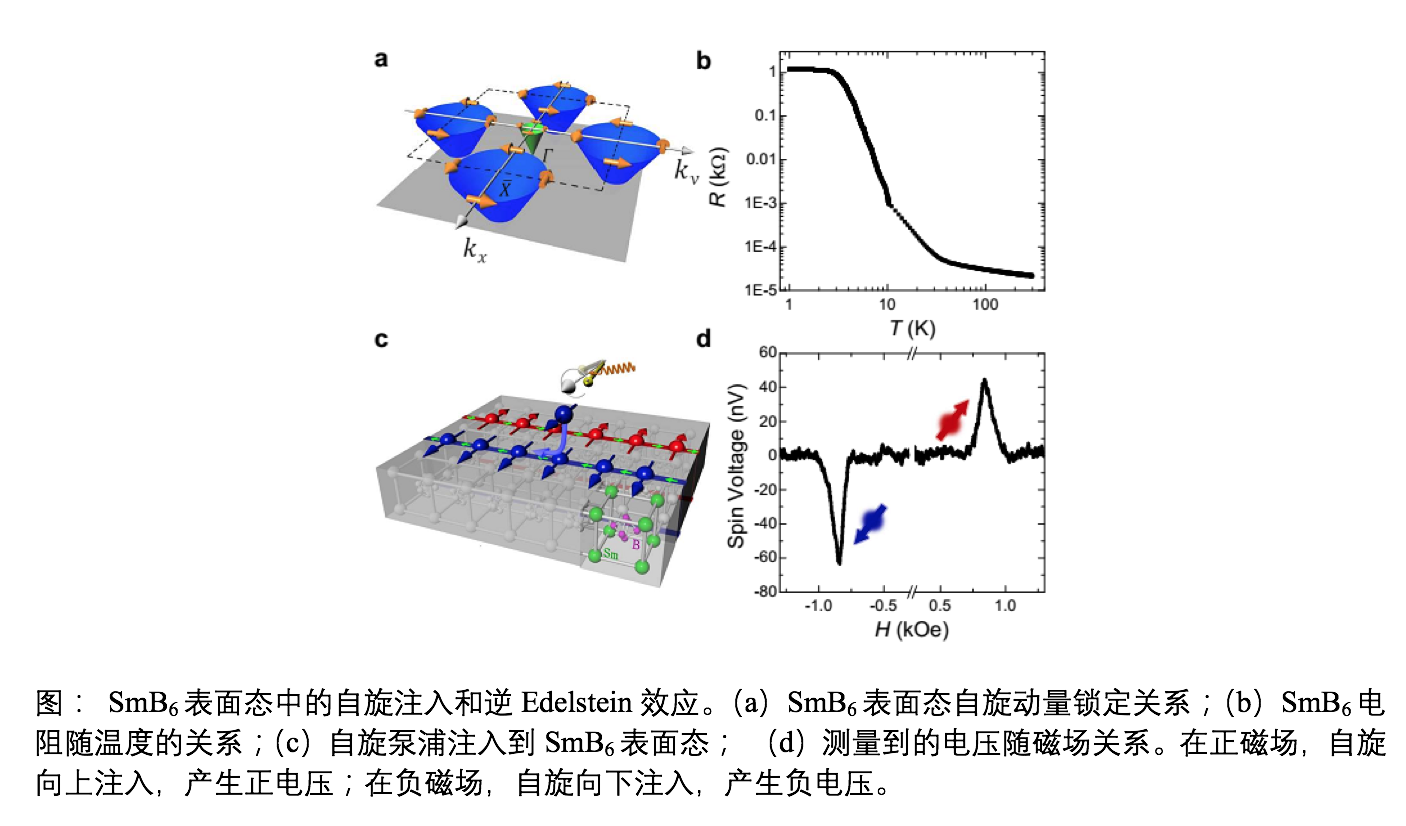Nature Communications reports ICQM faculty member Wei Han group’s work on spin to charge conversion of the topological surface states of SmB6
Recently, Prof. Wei Han’s group, from the International Center for Quantum Materials (ICQM), demonstrated the spin injection and observation of inverse Edelstein effect in the surface state of a topological Kondo insulator (TKI), SmB6. This work is cooperated with Jing Shi’s group, Chi Zhang’s group from ICQM, Tao Wu’s group and Xian Hui Chen’s group from University of Science and Technology of China. That’s the first time to observe the inverse Edelstein effect generated spin signal in pure surface states of topological insulators, by excluding the contributions from the bulk states. The work was reported by Nature Communications with the title of “Spin injection and inverse Edelstein effect in the surface states of topological Kondo insulator SmB6”.
Spintronics aims to use the spin degrees of freedom for information storage and computing technologies. Topological insulators, a class of quantum materials, have special gapless surface states, where the spin polarization of the Dirac fermions is locked to the momentum direction as illustrated in the figure (a). This spin-momentum locking property gives rise to very interesting spin-dependent physical phenomena such as the Edelstein and inverse Edelstein effects. However, a major obstacle to the clean demonstration of the Edelstein/inverse Edelstein effects for the spin–momentum locked surface states is the presence of unavoidable bulk carriers which dominate the conduction in these Bi2Se3-based three-dimensional TI. Recently, SmB6, a Kondo insulator, has been found to be a new type of TI. At temperatures below 3K, the bulk states are insulating, and only surface carriers contribute to the conduction, as demonstrated in figure (b) and the previous surface Hall measurements from other groups.

With the SmB6 samples provided by the group of Tao Wu and Xian Hui Chen and low temperature microwave techniques in the He-3 refrigerator provided by Jian Mi and Chi Zhang, Wei Han’s group use the spin pumping technique to inject the spin current from Py to SmB6 and measured the inverse Edelstein effect as illustrated in the figure (c) and (d). Systematical measurements, including frequency, power, temperature and the magnetic field angle dependences of the spin signal strongly support the observation. This observation could lead to future studies of the role of strong correlation in TKIs for spintronics and highly efficient spin current generation in the surface states of TIs via the materials design and engineering.
This work has been published online in Nature communications on Nov. 11th, 2016(Nature Communications, 7, 13485 (2016); doi: 10.1038/ncomms13485. ICQM PhD student Qi Song is the first author of this paper. This work was supported by National Basic Research Programs of China, National Natural Science Foundation of China, the Strategic Priority Research Program of the Chinese Academy of Sciences, CAS Hundred Talent Program, and the DOE BES Award.
Links:
Link to the paper: http://www.nature.com/articles/ncomms13485
Link to Prof. Wei Han’s group page: http://www.phy.pku.edu.cn/~LabSpin/home.html